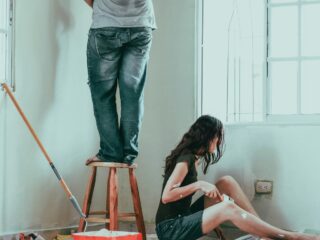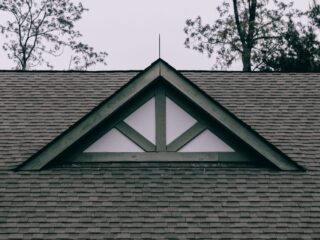
Log cabins are known for their rustic charm and connection to nature, but maintaining them can present unique challenges. Over time, log walls can develop a range of issues that, if left unaddressed, can compromise the structural integrity and aesthetic appeal of your cabin. Whether you’re dealing with rot, insect infestation, or moisture problems, it’s important to understand these common issues and know how to address them effectively. If you’re working with a company like Big Cabin, which provides top-quality building solutions for log cabins, you’ll also want to ensure that your maintenance efforts align with the high standards they set.
Moisture Intrusion and Rot
One of the most common issues with log walls is moisture intrusion, which can lead to rot. Logs are naturally porous, meaning they can absorb water from rain, snow, or humidity. When logs remain wet for extended periods, they become susceptible to rot, which weakens the wood and can cause significant structural damage.
How to Address It:
- Proper Sealing: To prevent moisture intrusion, it’s essential to seal your log walls regularly. Use high-quality sealants designed for log cabins, and ensure that all cracks, joints, and end grains are adequately sealed.
- Adequate Drainage: Ensure that water does not pool near the base of your cabin. Proper grading around the foundation and the installation of gutters and downspouts can help direct water away from the structure.
- Regular Inspections: Conduct regular inspections of your log walls, especially after heavy rains or snowfall. Look for signs of moisture buildup, such as discoloration, softness, or fungal growth, and address these issues promptly.
Insect Infestation
Insects like termites, carpenter ants, and wood-boring beetles are attracted to log walls, particularly if the wood is untreated or damaged. These pests can burrow into the wood, causing significant damage over time.
How to Address It:

- Use Treated Wood: If you’re working with a provider like Big Cabin, you can request treated logs that are less attractive to insects. Treated wood is infused with chemicals that repel pests and prevent infestations.
- Regular Treatments: Apply insecticidal treatments to your log walls every few years, focusing on areas that are most vulnerable, such as the base of the cabin and any cracks or joints.
- Remove Debris: Keep the area around your cabin clear of woodpiles, leaves, and other debris that could attract insects. Maintaining a clean perimeter reduces the chances of an infestation spreading to your log walls.
Cracking and Splitting
As logs dry out over time, they may develop cracks or splits. While some degree of cracking is normal and even adds to the rustic appearance of a log cabin, excessive cracking can compromise the strength of the logs and allow moisture and insects to enter.
How to Address It:
- Regular Maintenance: Inspect your log walls regularly for cracks and splits. Small cracks can often be left untreated, but larger ones should be filled with suitable log caulking or chinking material to prevent further damage.
- Control Moisture Levels: To minimize cracking, it’s important to control the moisture content of the logs. Avoid exposing your cabin to rapid changes in temperature and humidity, which can cause the wood to expand and contract.
- Apply Preservatives: Regularly applying wood preservatives can help maintain the flexibility of the logs, reducing the likelihood of cracking and splitting.
UV Damage
Exposure to sunlight can cause the surface of log walls to fade, crack, and degrade over time. UV rays break down the lignin in the wood, leading to a bleached appearance and making the logs more vulnerable to other forms of damage.
How to Address It:
- Stain with UV Protection: Use a high-quality stain that includes UV inhibitors to protect your log walls from the sun’s harmful rays. Companies like Big Cabinoften recommend specific products that offer the best protection for their logs.
- Regular Reapplication: Reapply the stain every few years, or as needed, to maintain UV protection. Regular maintenance is key to preserving the appearance and durability of your log walls.
- Shade and Awnings: If possible, provide some shade for your cabin, either through landscaping, awnings, or other structures. Reducing direct sunlight exposure can help prolong the life of your log walls.
Settling and Shrinkage
Log cabins are known to settle over time as the logs dry out and compress under their own weight. This natural process can cause gaps to form between logs, leading to drafts, heat loss, and structural issues.
How to Address It:

- Allow for Settling: When building or renovating a cabin, it’s important to account for settling in the design. This might include adjustable jacks or settling spaces above doors and windows to accommodate movement.
- Chinking: Use flexible chinking material to fill any gaps that form between logs as the cabin settles. Chinking is designed to move with the logs, maintaining a tight seal even as the cabin shifts.
- Consult Professionals: If you’re experiencing significant settling issues, it’s best to consult with professionals like those at Big Cabin, who have experience in dealing with log cabin construction and maintenance.
Conclusion
Maintaining log walls requires regular attention and care to ensure your cabin remains in top condition. By addressing common issues such as moisture intrusion, insect infestation, cracking, UV damage, and settling, you can extend the life of your log walls and preserve the beauty of your cabin for years to come. Whether you’re building a new cabin or maintaining an existing one, partnering with a reputable company like Big Cabin can provide you with the high-quality materials and expert advice needed to keep your log walls in pristine condition.





